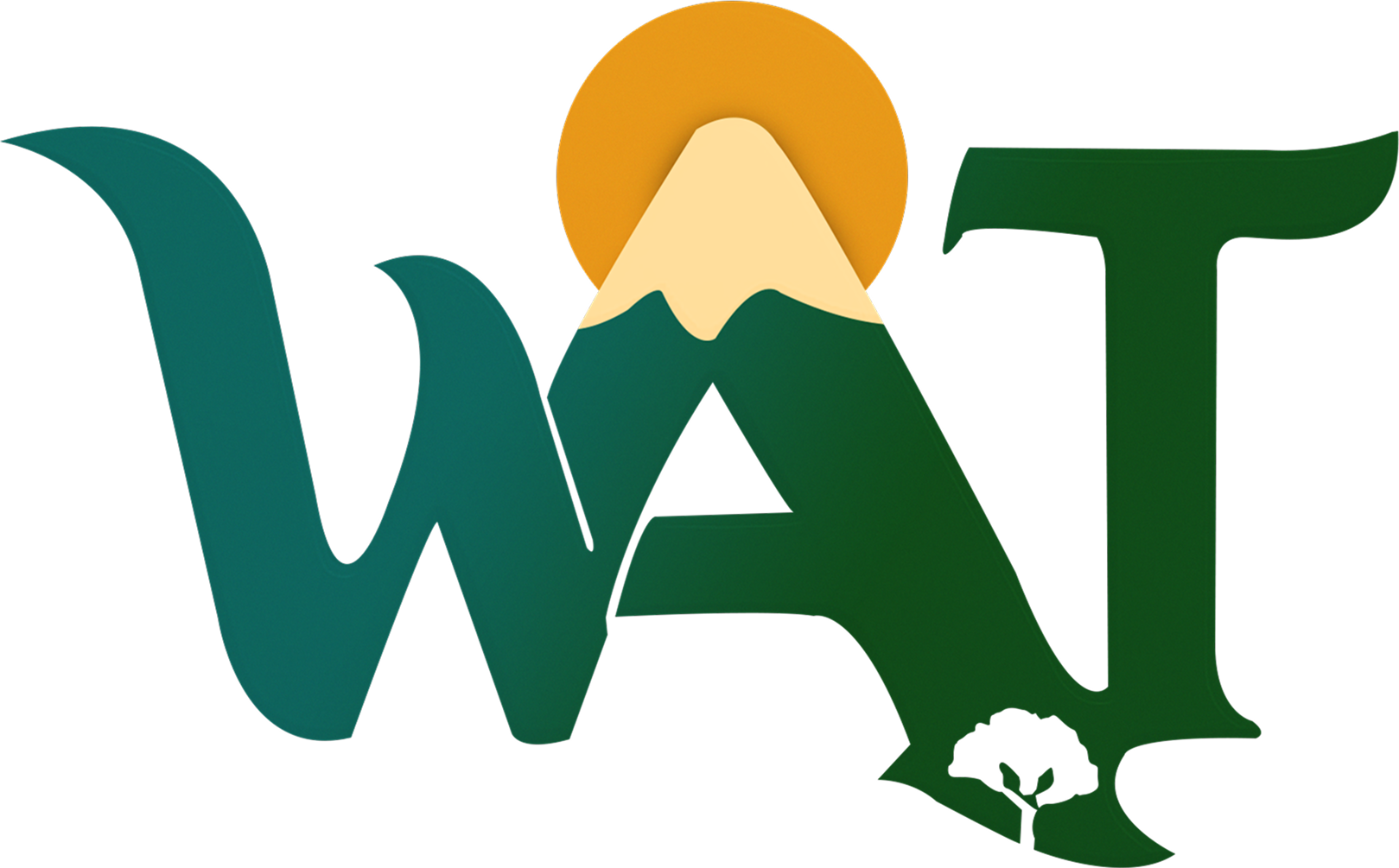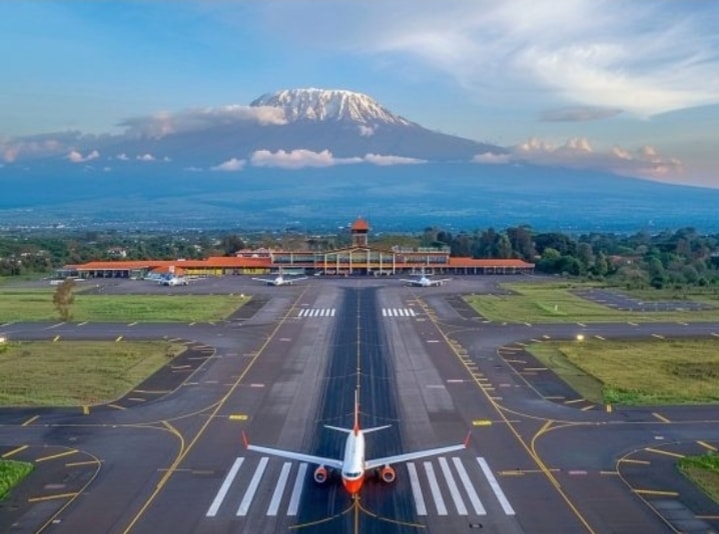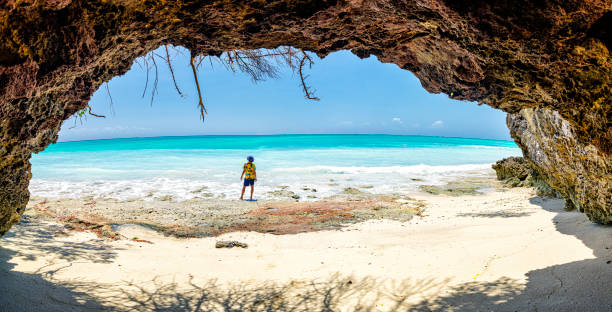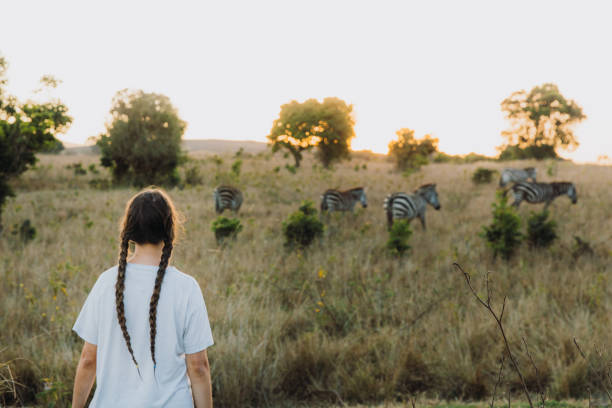Is Mount Kilimanjaro in Kenya or Tanzania?

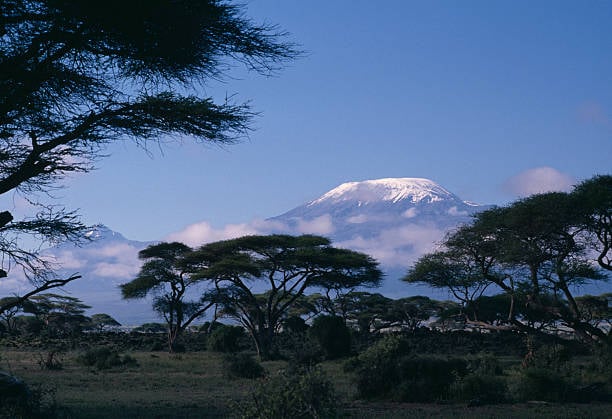
Of all the natural wonders in the world, few capture the imagination like Mount Kilimanjaro. Its iconic, snow-capped peak rising dramatically from the surrounding plains is a symbol of adventure and the untamed beauty of East Africa.
As the continent's highest mountain, it draws travelers, climbers, and dreamers from every corner of the globe.
However, its prominent place in the world's geography comes with a persistent question: is this majestic peak in Kenya or Tanzania? The confusion is understandable, fueled by popular culture, historical maps, and breathtaking photographs. Many mistakenly associate the view with a Kenya kilimanjaro experience.
This guide provides the definitive answer to that question. We will explore the mountain's precise location, delve into the historical reasons for the confusion, detail the official trekking routes, and compare it to its famous neighbor, Mount Kenya. By the end, you'll know exactly where mount kilimanjaro stands and how to plan your own adventure to its summit.
Mount Kilimanjaro’s True Location
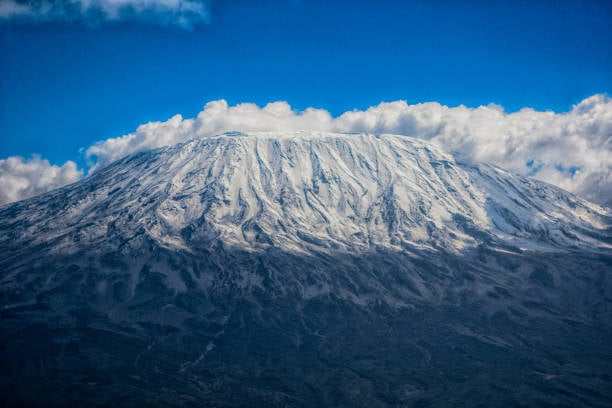
Snow-capped peak of Mount Kilimanjaro under a clear blue sky, showcasing the beauty of Mt Kilimanjaro and attracting adventurers planning a Kilimanjaro trek
To be unequivocally clear, Mount Kilimanjaro is located entirely within the borders of northern Tanzania.
The mountain and its surrounding ecosystem are protected within the Kilimanjaro National Park, a designated UNESCO World Heritage Site since 1987. This status recognizes its outstanding universal value, from its unique geology to its diverse flora and fauna.
The entire massif, including its three volcanic cones (Kibo, Mawenzi, and Shira) lies south of the Tanzania-Kenya border. The park gates, which are the starting points for every official climb, are all situated within Tanzania.
For travelers, the main hubs for a Kilimanjaro adventure are the Tanzanian towns of Moshi and Arusha. Moshi, known as the gateway to Kilimanjaro, sits directly at the foot of the mountain. Arusha, a larger safari hub, is about a 90-minute drive away.
Access is straightforward, with Kilimanjaro International Airport (JRO) serving as the primary entry point for climbers. This modern Kilimanjaro airport is conveniently located between Arusha and Moshi, making the transfer to your pre-climb hotel a simple affair.
The location of mount kilimanjaro in northern Tanzania is not just a geographical fact but the very foundation of the entire climbing industry.
Why So Many People Think Kilimanjaro is in Kenya
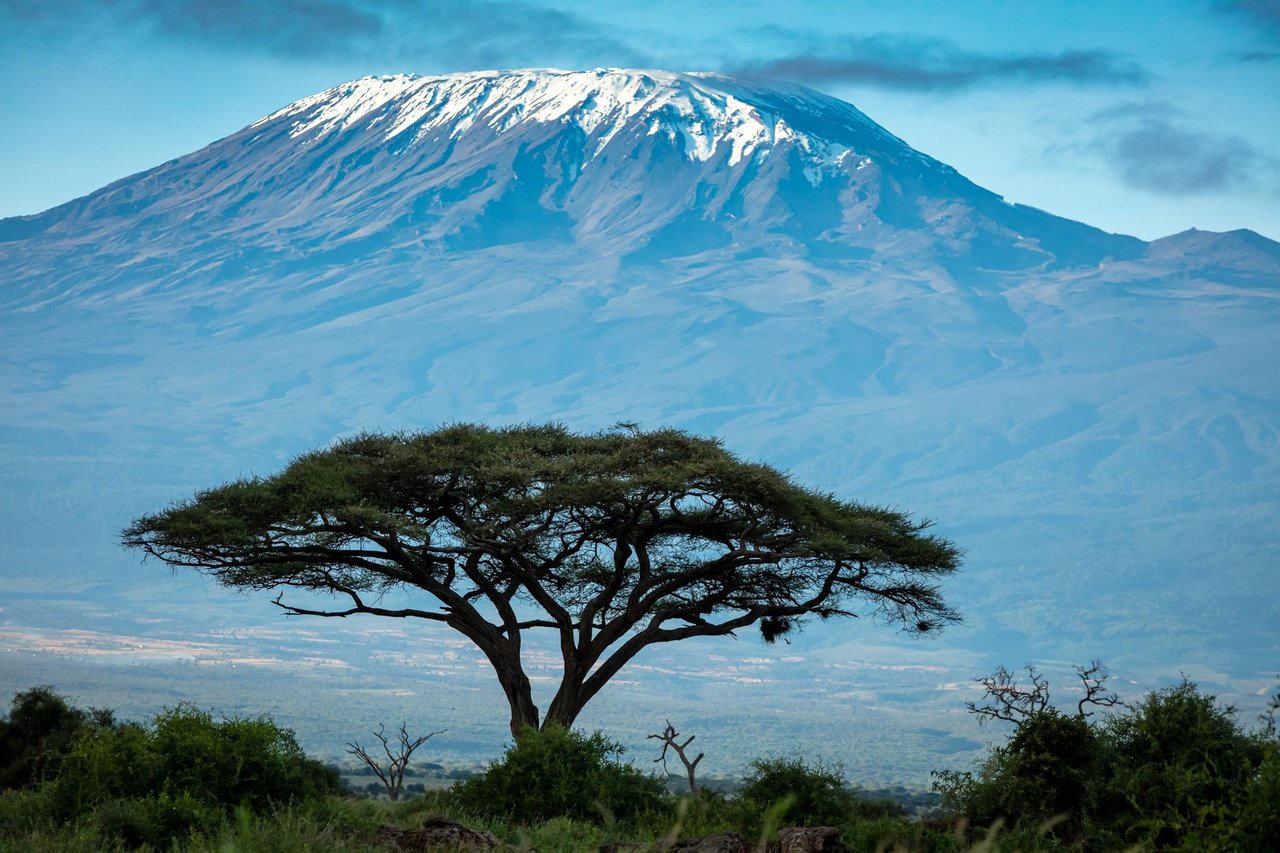
Kilimanjaro behind acacia tree, a stunning view for Kilimanjaro climb and trekking adventures
If the mountain is firmly in Tanzania, why does the Kenya - Kilimanjaro connection persist? The answer lies in geography and marketing.
The most famous, picture-perfect, panoramic views of Kilimanjaro are actually from the Kenyan side, specifically from Amboseli National Park.
From Amboseli, the mountain’s full profile is visible, rising majestically above the flat, acacia-dotted surrounding plains. This vantage point provides the classic photograph of elephants or giraffes grazing in the foreground with Kilimanjaro’s snowy peak dominating the horizon. For decades, this imagery has been used in marketing materials, leading many to assume the mountain is in Kenya.
The truth is, while Kenya offers the best long-distance photography opportunities, Tanzania offers the only way to experience it up close. The dense forests on the mountain's lower slopes in Tanzania obscure these wide-angle views.
Once you are in Tanzania, you are too close to see the full scope of the massif, but you are in the right place to begin your ascent and perhaps spot unique wildlife like colobus monkeys in the montane forest. The relationship between kenya and kilimanjaro is one of a spectator and its stage.
Safari Routes Between Kenya and Tanzania
Another source of confusion comes from popular safari itineraries in East Africa. Many travelers embark on a comprehensive round trip that covers the highlights of both Kenya and Tanzania. These tours often start in Nairobi, Kenya, and proceed to Amboseli National Park for views of Kilimanjaro.
From there, the tour crosses the border into Tanzania to visit iconic parks like the Serengeti, Ngorongoro Crater, and Tarangire. Because the journey often starts in Kenya and features the mountain early on, the association sticks. The seamless flow of these cross-border adventures reinforces the idea that kenya and kilimanjaro are part of the same geographical entity, even though the peak itself is solely Tanzanian.
Colonial History and Border Stories
The modern border between Kenya and Tanzania is a relic of colonial history. In the late 19th century, East Africa was carved up by European powers. Present-day Tanzania was German East Africa, while Kenya was a British protectorate. The border was defined in the 1886 Anglo-German Agreement.
A popular and romanticized legend claims that Queen Victoria gifted Mount Kilimanjaro to her grandson, Kaiser Wilhelm II of Germany. The story goes that she wanted him to have his own snowy mountain, as Britain already had Mount Kenya. While a charming tale, it is historically inaccurate.
The border was actually drawn to follow a straight line from the coast to Lake Victoria, but it curves around Kilimanjaro. Historians believe this was a strategic move by the Germans to ensure the region's highest mountain was within their territory, a powerful symbol in their new colony. This historical border decision is the ultimate reason why the Kilimanjaro mount & Kenya debate is settled in favor of Tanzania's ownership of the former and Britain's of the latter national park.
Climb Mount Kilimanjaro – Starting in Tanzania
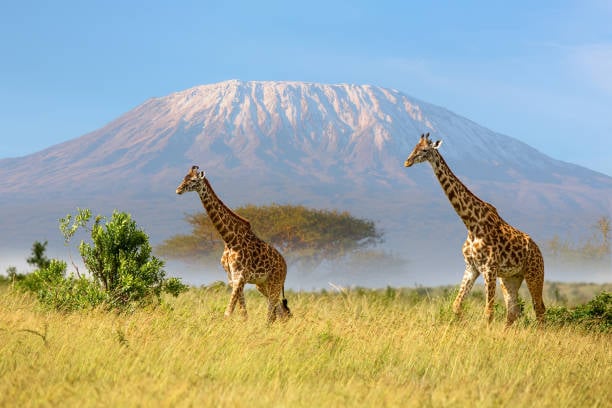
Giraffes in front of Mt Kilimanjaro, showcasing the beauty of a Kilimanjaro
Every single climb of mount Kilimanjaro begins and ends in Tanzania. The Tanzania National Parks Authority (TANAPA) is the sole governing body that manages the mountain, issues climbing permits, and maintains the official trekking routes. It is impossible to legally start a kilimanjaro climb from the Kenyan side.
All trekkers must register at one of the official park gates, where their permits are checked and they are accompanied by licensed Tanzanian guides and porters. These regulations ensure safety, environmental protection, and support for the local economy. The Mt Kilimanjaro climb is a cornerstone of Tanzania's tourism industry.
From the moment you decide on climbing Mount Kilimanjaro, your journey will be rooted in Tanzania. From flying into a Tanzanian airport to staying in a Tanzanian town and hiring a Tanzanian crew, the experience is thoroughly and proudly Tanzanian. All trekking routes are managed and maintained within the country.
Popular Kilimanjaro Routes
Choosing a route is one of the most important decisions for your trek. There are several official trekking routes, each offering a different experience in terms of scenery, difficulty, and acclimatization profile.
Machame Route
Often called the "Whiskey Route," the Machame route is the most popular choice for climbers. It offers excellent acclimatization opportunities and stunning scenery that changes through five distinct climate zones. It's a challenging trek with steep sections but boasts a high success rate for those who take it slow.
Rongai Route
The Rongai route is the only one that approaches Kilimanjaro from the north, near the Kenyan border. It is generally drier than the southern routes and tends to be less crowded. It's a great option during the rainy season and offers a more remote, wilderness experience.
Lemosho Route
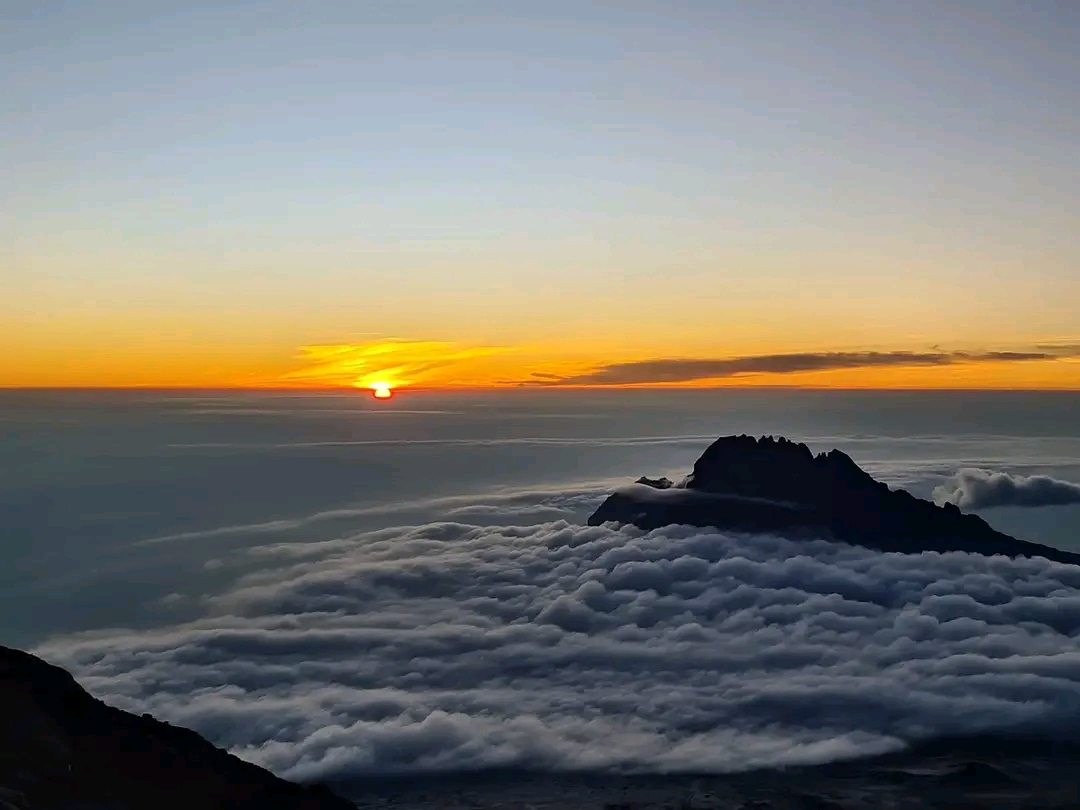
Considered one of the most beautiful routes, Lemosho starts in the west and crosses the vast Shira Plateau. It offers fantastic acclimatization and panoramic views. Though longer and more expensive, its high success rates make it a favorite.
Northern Circuit
The Northern Circuit is the longest route, circling the mountain on its quiet, northern side. This extended journey provides maximum acclimatization and a unique perspective on the peak, away from the crowds. It has the highest summit success rate.
Marangu Route
Nicknamed the "Coca-Cola Route," Marangu is the oldest and most established path. It is the only route with hut accommodations for every night of the trek. It follows a gradual, less scenic path and uses the same trail for ascent and descent.
Umbwe and the Western Breach
For the most experienced and adventurous trekkers, the Umbwe Route offers a short, steep, and direct challenge. It is often combined with the Western Breach, a technical and formidable approach to the crater rim that requires scrambling over rock and ice. This path is reserved for physically fit climbers with high-altitude experience.
Famous Camps on the Mountain
Acclimatization is key to a successful climb, and this is achieved by resting at strategic camps along the trekking routes. Each camp is a small community of climbers, guides, and porters, all sharing the same goal.
Barranco Camp
Situated at the base of the imposing Barranco Wall, Barranco Camp (3,960 m) is famous for its dramatic setting. The next day’s scramble up the wall is a thrilling highlight for many trekkers on the Machame, Lemosho, and Umbwe routes.
Karanga Camp
Karanga Camp (3,995 m) is a crucial acclimatization stop before the final push. It’s the last camp with a water source and offers a day of "climb high, sleep low" as trekkers often hike up towards Barafu Camp before returning to sleep at Karanga.
Machame Camp
Located in the montane forest, Machame Camp (2,835 m) is the first stop on the popular Machame route. It introduces climbers to the rhythm of mountain life and the sounds of the forest after dark.
Shira Camp
Perched on the vast Shira Plateau, Shira Camp (3,850 m) offers breathtaking views across the plains below. This former volcanic crater provides a unique, flat landscape high on the mountain, a relic of Kilimanjaro’s ancient geological activity.
Barafu Camp
Barafu Camp, meaning "ice" in Swahili, is the final base camp before the summit attempt. Located at a stark 4,673 m, this rocky, windswept camp is where climbers rest for a few hours before beginning their midnight ascent to Uhuru Peak.
Mweka Camp
Used for descent, Mweka Camp (3,100 m) is a welcome sight for weary climbers returning from the summit. Located in the lush heath zone, it’s a place for celebration and reflection on the incredible achievement of the past days.
Climbing Kilimanjaro vs Climb Mount Kenya
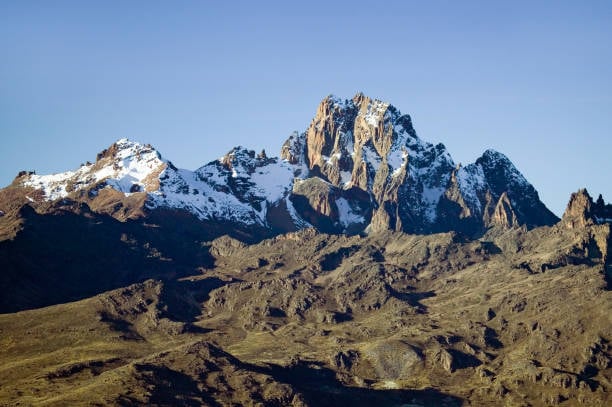
Snow-capped peaks of Mount Kenya at Mount Kenya National Park, ideal for a scenic Mt Kenya climb
Many adventurous travelers looking to summit a major African peak consider both Kilimanjaro and its neighbor, Mount Kenya. As the continent's second-highest peak, Mount Kenya offers a different but equally rewarding challenge. It is protected within the Mount Kenya National Park.
While Kilimanjaro is a high-altitude trek, a Mount Kenya expedition to its true summits is a technical climb. The most popular trekking peak on Mount Kenya is Point Lenana at 4,985 m, which is accessible to any fit hiker. However, the mountain's highest points, Batian (5,199 m) and Nelion (5,188 m), require rock climbing skills and equipment.
The north face standard route on Batian is the most common technical route, but it is a serious undertaking. For those seeking a pure trekking challenge to the highest possible point, Kilimanjaro is the choice. For those wanting to combine trekking with technical mountaineering, the Mt Kenya climb is an excellent alternative. Popular trekking routes like the Chogoria route offer stunning scenery on the way to the trekking peak.
Comparing Difficulty Levels
So, is Mt Kenya harder than Kilimanjaro? The answer depends on your goal. Reaching Kilimanjaro’s Uhuru Peak at 5,895 m is a greater high-altitude challenge than reaching Mount Kenya's trekking summit, Point Lenana. The sheer altitude makes Kilimanjaro a more significant physiological test.
However, reaching Batian Peak on Mt Kenya is a far more difficult and dangerous endeavor than summiting Kilimanjaro. It involves a steep ascent on a difficult route that requires technical climb skills, including rope work and navigating exposed sections. In this sense, a true summit of Mount Kenya is harder.
Trekking Experience Differences
The trekking experience on the two mountains also differs. A Mt Kenya climb is often quieter, with fewer trekkers on the trails. The landscapes within Mount Kenya National Park are exceptionally beautiful, with unique flora like giant groundsels and senecios, and a higher chance of seeing wildlife.
The Kenya Wildlife Service manages the park, and trekkers might spot elephants, buffalo, and even colobus monkeys in the forests. Kilimanjaro, while busier, offers the unique experience of passing through five distinct climate zones, from rainforest to arctic. Its scale is grander, and the feeling of standing on the "Roof of Africa" is an unmatched achievement for non-technical climbers.
Kilimanjaro Airport and Access Points
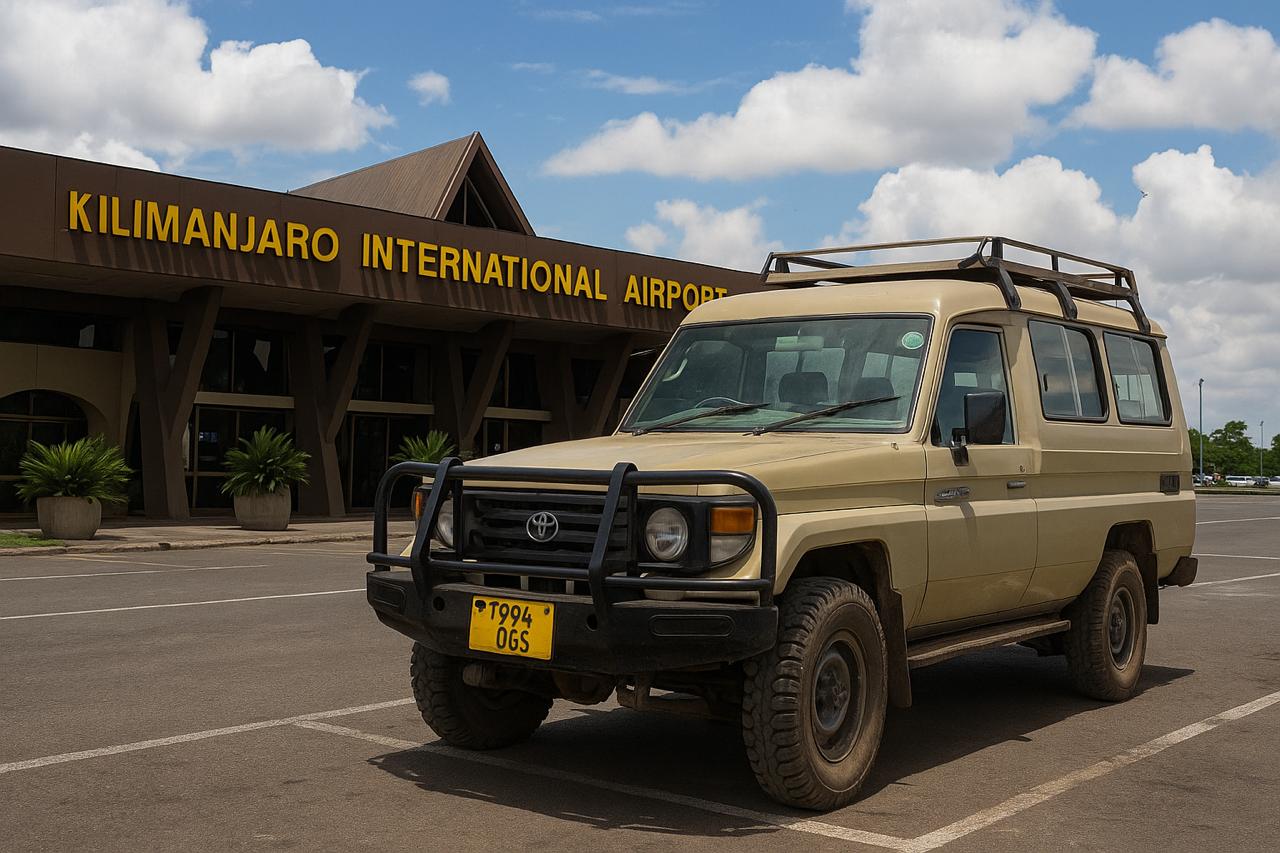
WeAreTanzania safari vehicle at Kilimanjaro International Airport
The most direct way to reach Kilimanjaro is by flying into Kilimanjaro International Airport (JRO). This airport, also known as KIA, is serviced by several international airlines, including KLM, Qatar Airways, and Ethiopian Airlines. Upon arrival at kilimanjaro airport, it's a 45-60 minute drive to either Moshi or Arusha.
Alternatively, some travelers fly into Nairobi Airport (Jomo Kenyatta International Airport - NBO) in Kenya, which is a larger hub with more flight options. From Nairobi, you can take a connecting domestic flight to Kilimanjaro International Airport or take a shuttle bus across the land border to Arusha. This bus journey takes a few hours but can be a cost-effective option.
Altitude, Health, and Acclimatization
The biggest challenge on Kilimanjaro is not the technical difficulty but the extreme altitude. Altitude sickness, or Acute Mountain Sickness (AMS), is a serious risk that affects many climbers. Symptoms can range from mild headaches and nausea to more severe, life-threatening conditions like HAPE and HACE.
Proper acclimatization is the single most important factor for a successful summit. This means choosing a longer route (7 or 8 days is recommended), walking slowly ("pole pole"), and drinking plenty of water. Your guides are trained to monitor you for signs of altitude sickness. Difficulty sleeping and loss of appetite are common, but listening to your body and communicating with your guide is crucial.
A high summit success rate is directly linked to a slow and steady ascent. The final push on summit day is the most grueling part, but with proper preparation and pacing, reaching the top is an achievable dream.
Combining Kilimanjaro and Safari Adventures
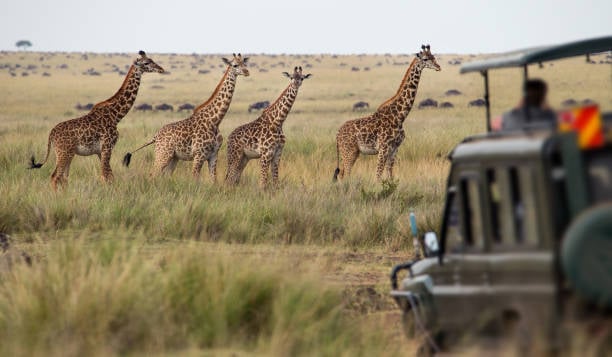
Giraffes spotted during a safari tour with WeAreTanzania, perfect adventure before or after a Mt Kilimanjaro climb
A trip to East Africa would be incomplete without experiencing its legendary wildlife. Climbing Kilimanjaro pairs perfectly with a safari adventure in either Tanzania or Kenya. After the climb, you can descend from the mountain and head straight into the vast plains of the Serengeti to witness the Great Migration.
The Ngorongoro Crater and Tarangire National Park are also nearby, offering some of the most concentrated wildlife viewing on the planet. This combination allows you to witness incredible natural beauty from the highest peak to the endless grasslands.
You can also cross the border to explore Kenya's famed reserves. The Masai Mara is contiguous with the Serengeti, and Amboseli offers those iconic views of Kilimanjaro you'll now appreciate from a new perspective.
Blending a challenging climb with a relaxing safari and engagement with local culture is the ultimate East African experience, creating memories that will last for future generations.
FAQs about Mount Kilimanjaro and Mount Kenya
What country is Kilimanjaro in?
Mt Kilimanjaro is 100% in Tanzania. The entire mountain, including its three volcanic cones and all climbing routes, is located within Kilimanjaro National Park in northern Tanzania. While often photographed from Kenya, the mountain itself does not cross the border.
Is Mt Kenya harder than Kilimanjaro?
It depends on the objective. Reaching Kilimanjaro's summit (5,895 m) is a greater high-altitude trekking challenge. However, reaching the true summit of Mount Kenya (Batian Peak, 5,199 m) is a difficult technical climb that requires rock climbing skills and equipment. The standard trekking peak on Mount Kenya, Point Lenana, is lower and less demanding than Kilimanjaro's summit. The north face standard route on Batian is considered a serious mountaineering objective.
Can you get to Kilimanjaro from Kenya?
Yes, you can travel to the Kilimanjaro region from Kenya. Many travelers fly into Nairobi Airport (NBO) and then either take a short connecting flight to Kilimanjaro Airport (JRO) in Tanzania or take a shuttle bus across the border to Arusha or Moshi. You can view the mountain from Kenya's Amboseli National Park, but you must cross into Tanzania to actually climb it. The kenya kilimanjaro journey is a popular travel route.
What is the death zone on Kilimanjaro?
Kilimanjaro does not have a "death zone" in the same way mountains over 8,000 meters like Mount Everest do. The term "death zone" refers to altitudes where the oxygen level is insufficient to sustain human life for an extended period. While Kilimanjaro's summit is at an extreme altitude of 5,895 m, climbers spend only a few hours at the top. The primary risks are severe forms of altitude sickness, not the inability to survive for a short time. A successful summit depends on proper acclimatization to mitigate these risks.
Which is taller: Mount Kenya or Kilimanjaro?
Mount Kilimanjaro is significantly taller than Mount Kenya. At 5,895 meters (19,341 feet), Mt Kilimanjaro is the highest mountain in Africa and one of the Seven Summits. Mount Kenya's highest peak, Batian, is 5,199 meters (17,057 feet), making it the second-highest of Africa's highest peaks.
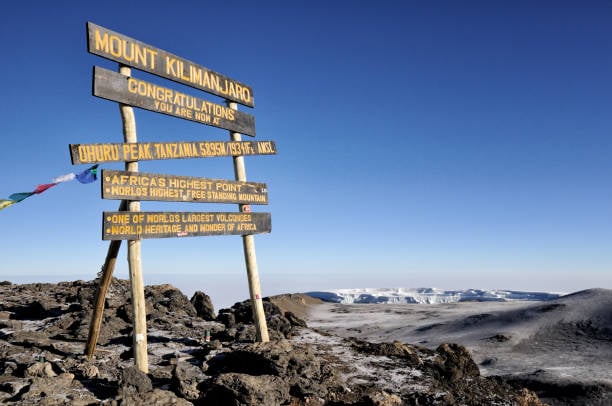
Uhuru Peak sign at Mount Kilimanjaro summit, marking the highest point in Africa
Final Answer – Is Mount Kilimanjaro in Kenya or Tanzania?
The definitive answer is that Mount Kilimanjaro is located entirely in Tanzania. Every route, every camp, and the summit itself, Uhuru Peak, are within the borders of Kilimanjaro National Park in Tanzania.
The enduring KenyaKilimanjaro confusion stems from Kenya's Amboseli National Park offering the most iconic, long-distance views of Africa's highest mountain. While Kenya provides the postcard photograph, Tanzania provides the adventure.
To climb the highest mountain in Africa and achieve a successful summit, your journey must begin and end in Tanzania. The experience is a testament to the country's stunning landscapes, rich culture, and the spirit of its people who guide climbers safely to the roof of the continent.
